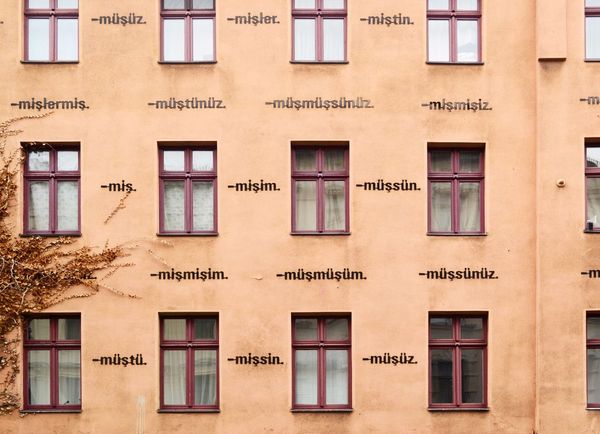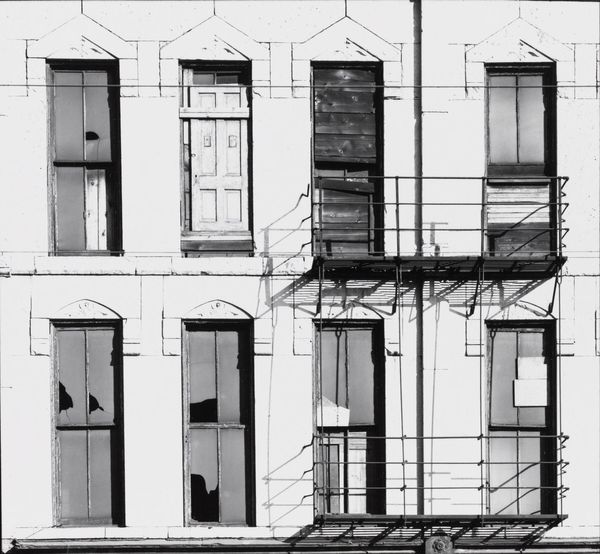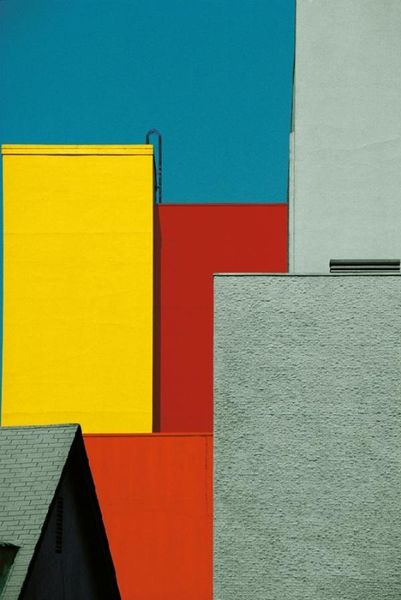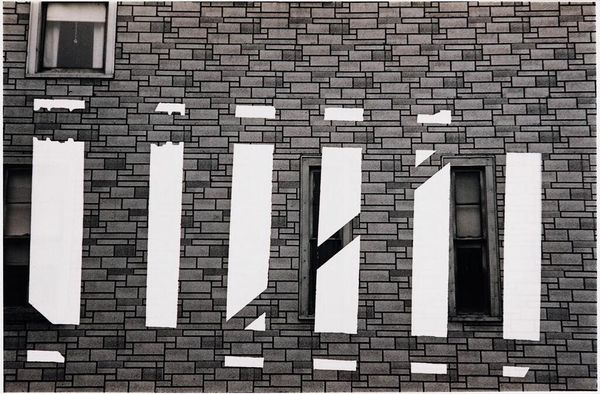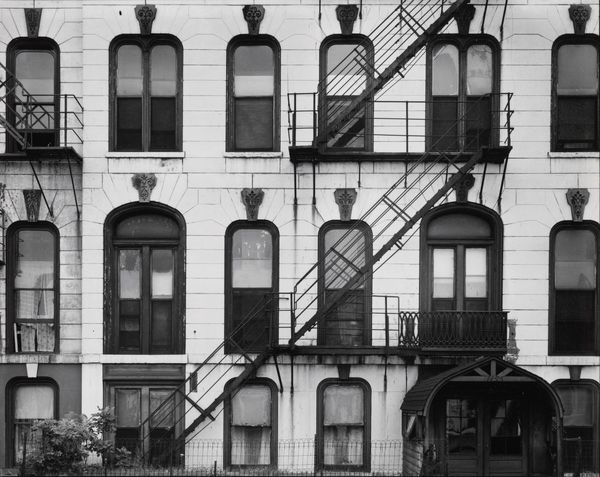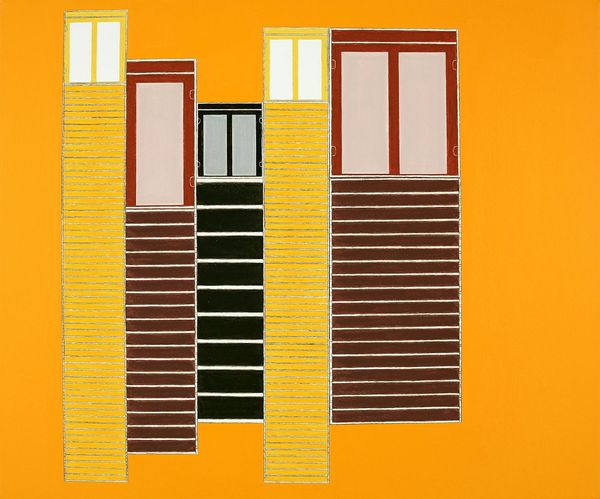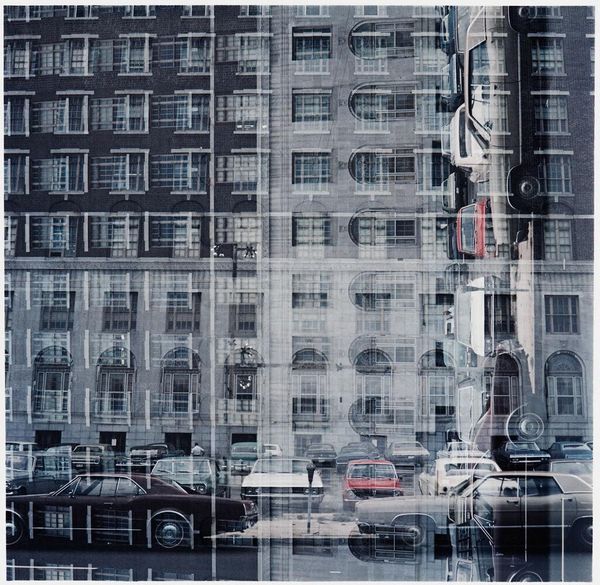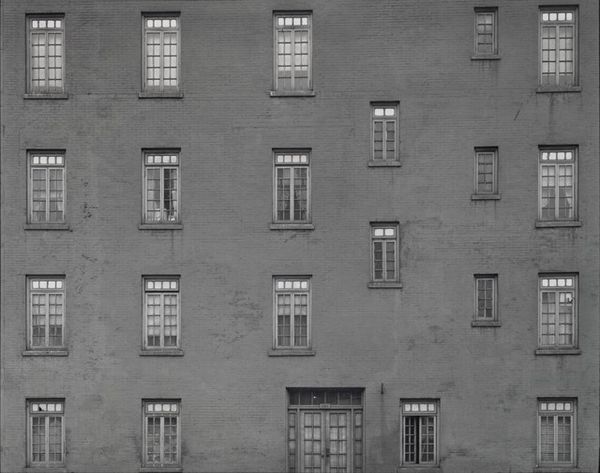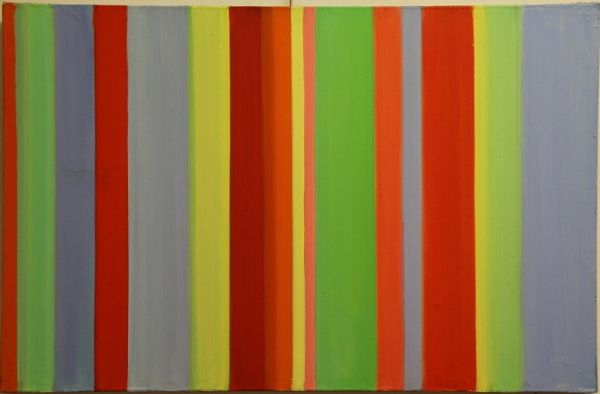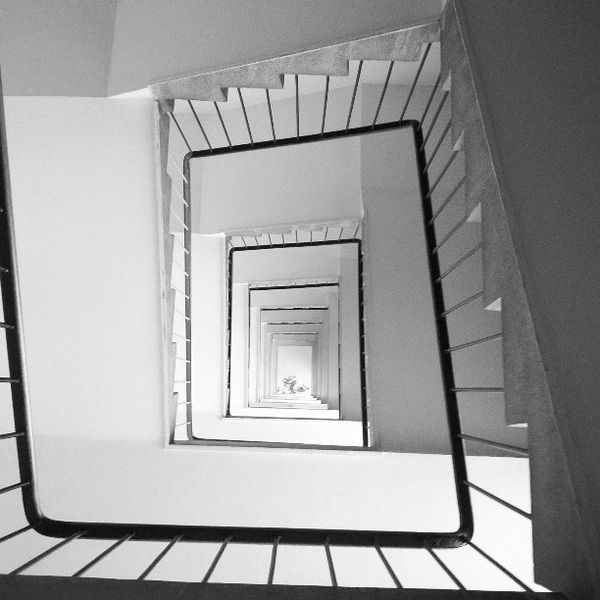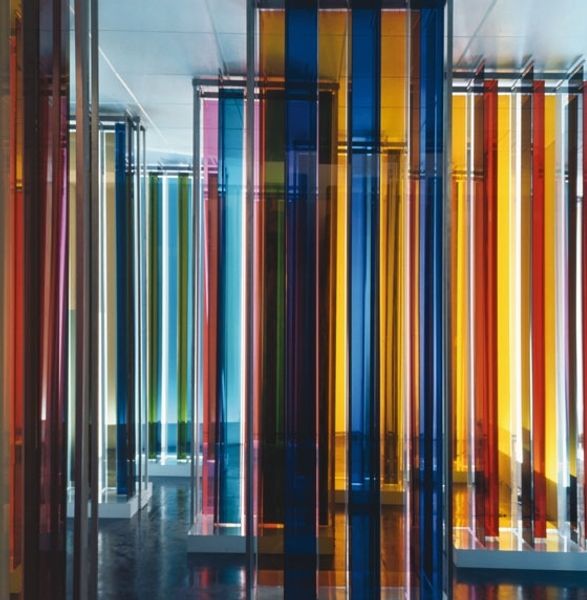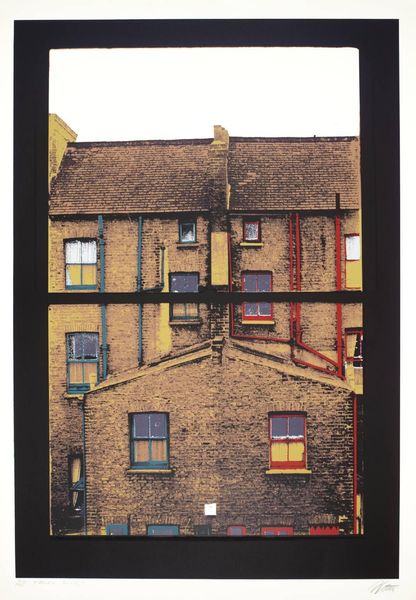
Dimensions: display dimensions variable duration: 16 min
Copyright: © Anri Sala | CC-BY-NC-ND 4.0 DEED, Photo: Tate
Editor: So, this is Anri Sala's video work, "Dammi i Colori." The building's facade, awash in vibrant colors, really strikes me. It’s like the whole structure is protesting. What’s your take? Curator: The transformation of this building in Tirana isn't just aesthetic. Consider the labor involved in applying these colors. It's a direct intervention in the urban landscape, reflecting a shift in social priorities and material conditions. How does this re-painting challenge our conventional ideas of urban planning and social structure? Editor: I see what you mean. It's like the building itself is a canvas, reworked by the people and politics of Tirana. It makes me wonder about the power of color as a tool for change. Curator: Indeed. Examining this piece through a materialist lens lets us appreciate the interplay of color, labor, and social context, and how they reshape urban life.
Comments
Join the conversation
Join millions of artists and users on Artera today and experience the ultimate creative platform.
tate 6 months ago
⋮
Dammi i Colori is a sixteen-minute colour video projection with sound that focuses on the changes to Albania’s capital city, Tirana, three years after a programme of urban transformation was initiated there that involved painting its buildings in a range of vivid colours. The film’s footage consists of scenes of the city filmed by Albanian artist Anri Sala and a voice-over in which the city’s then mayor and leader of the project, the painter Edi Rama, explains his regeneration project to Sala. The film begins with a slow panning view of Tirana night accompanied by Rama’s voice, followed by shots of the city in daylight with audio consisting of street sounds, including the noises of cars, building work, running water and the activities of pedestrians. These day and night-time scenes then alternate throughout the film. The night scenes are set against a black sky, and were filmed from a slow-moving car. In some of these shots, the camera is pointed up towards the tops of the buildings, while in others it points straight out of the vehicle’s window so that half of the frame is filled with brown soil or grey pavement. The daytime sections of the footage were filmed directly in the street and focus on the city’s activity and close-ups of the buildings’ coloured facades. Towards the end of the film viewers see shots of Rama, dressed in a black suit, sitting in the back of the car, and the final frame shows him leaving the vehicle.
